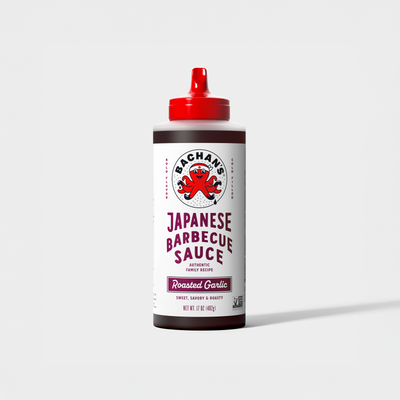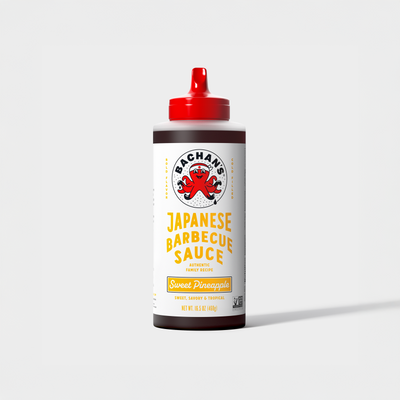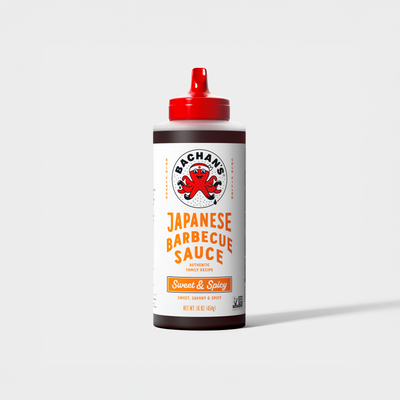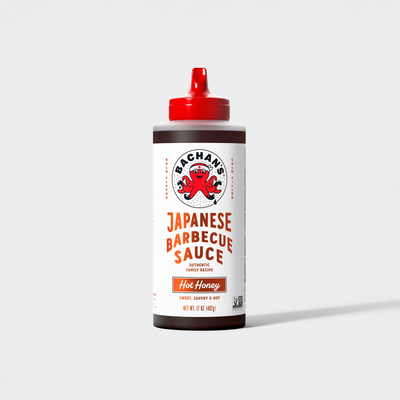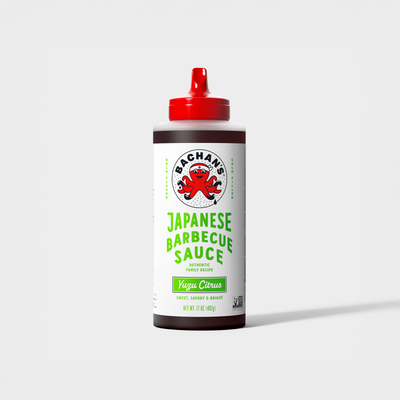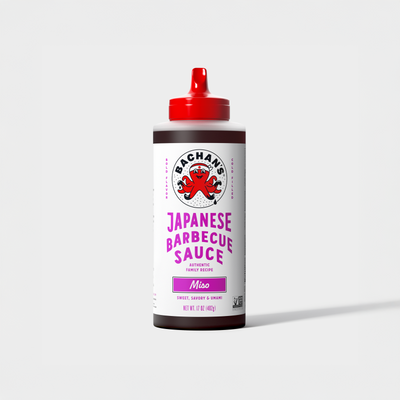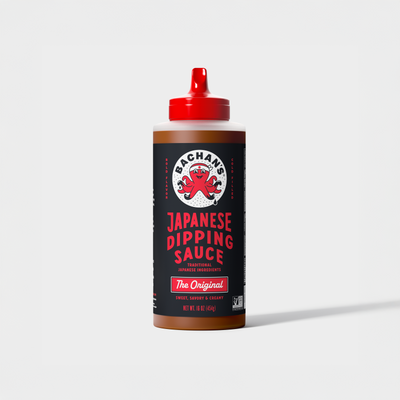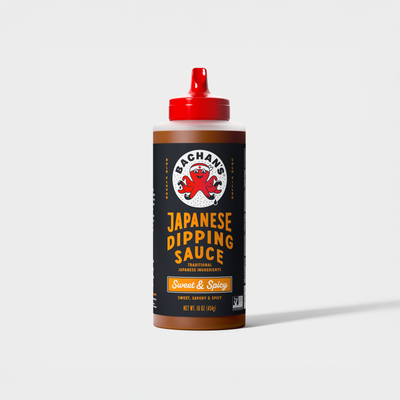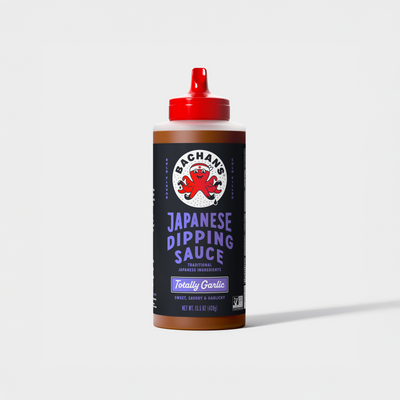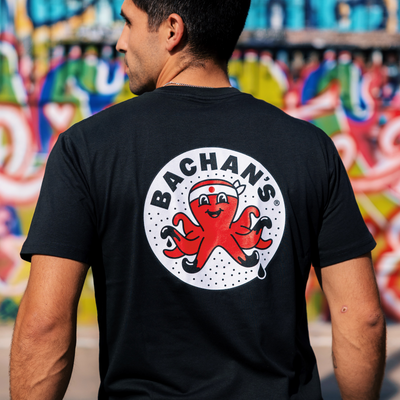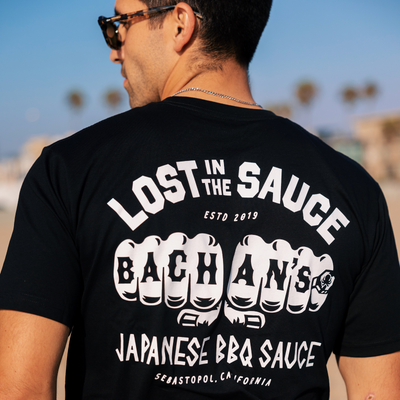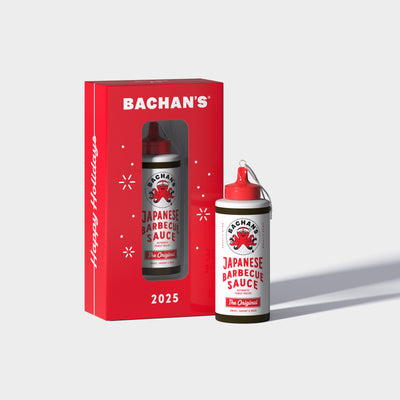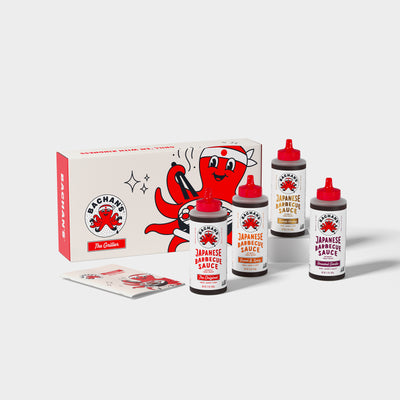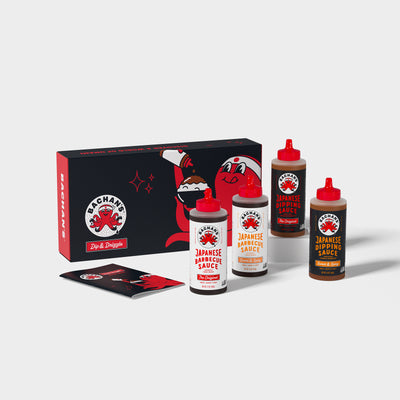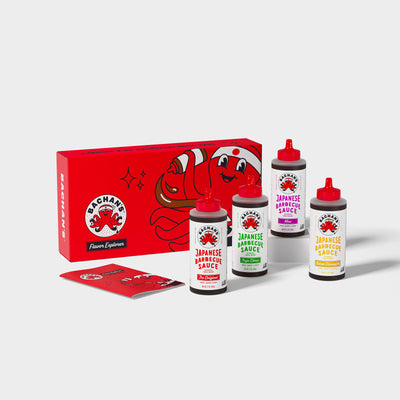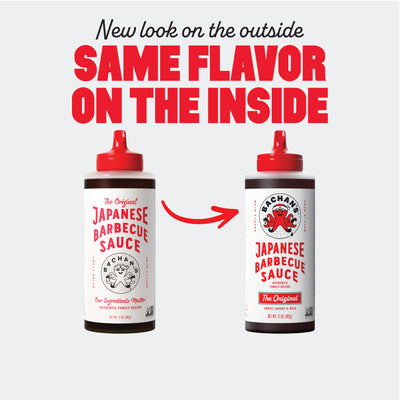Posted by Corey Loftus on
Yakisoba
- Cook Time: 10 Mins
- Serves: 1-2

Spaghetti is out. Pesto has gone to bed. We’re saying no-chi to gnocchi. These days, we’re all about yakisoba noodles. Typically, they’re made with oyster sauce, ketchup, soy sauce, sugar, and that thing nobody can pronounce (also known as Worcestershire sauce). In this recipe, we swap all five ingredients out for one magic addition: Bachan’s Original Japanese Barbecue Sauce.
Is it your birthday?! It certainly feels like it.
The Low-down on Yakisoba
These stir-fried noodles don’t stand alone. They’re traditionally combined with a protein (like pork, seafood, or chicken) and vegetables and tossed with something salty, like soy sauce or — in this case — Bachan’s.
Because of the ingredients and the way they’re cooked, yakisoba is somehow both soft and crispy, which shouldn’t even be possible, but here we are.
You can cook this recipe in a flash, so don’t leave your stove unattended. If it seems too liquidy at first, it just needs a little more time to sizzle. By turning the heat up, you’re going to burn off some of that water, leaving you with a thicker sauce that coats the noodles and leaves you with a flavor-packed dream dish.
Don’t let the lack of other sauces fool you. Bachan’s is a savory-sweet concoction of soy, mirin, ginger, garlic, and green onion. It’s the OG. The GOAT. The VIP — er, VIS? Very important sauce.
Red bell peppers and mushrooms are other common additions. Delicious choices for protein are pork belly (rich and fatty, just the way we like our swine), shrimp, and beef filet, cut into strips. If your meat is already cooked, be sure to toss it in more toward the end so you don’t end up with chewy beef. Nobody likes chewy beef.
Of course, if you live a meat-free lifestyle, you can ditch the animal protein and opt for tofu, instead. Press the tofu between two plates (or use a tofu pressure) a few hours to 24 hours before cooking your yakisoba. That will remove the moisture so the tofu has more of a meat-like texture, instead of soft and watery. If your tastebuds are craving crunchy tofu, after pressing, toss it in cornstarch and then lightly fry it before continuing with our yakisoba recipe.
Seitan is another excellent meat substitute and, like tofu, there’s nothing really to cook. It needs only to be heated. Simple.
The History of Yakisoba Noodles
We bet you didn’t think that noodles had their own backstory. You’d be wrong.
Yakisoba originated from Chinese chow mein, which is stir-fried noodles often seasoned with soy sauce. It made its way to Japan after World War II, circa 1950. The economy was very different back then. Ingredients we now consider commonplace, like flour, were quite pricey. So, to save on noodles, many families beefed the dish up with cabbage, which was much more affordable. While soy sauce was a common addition, Worcestershire sauce (there’s that funny word again) ended up being another go-to ingredient because it was more potent and wouldn’t get as diluted by the cabbage.
Yakisoba noodles quickly gained popularity and started popping up in grocery stores, candy stores, food stalls, and diners. Today, you’ll find it in schools, food festivals, and fairs. Walk the streets of Japan and you’ll quickly see it’s a staple, right next to yakitori and not far from takoyaki.
In a time of food insecurity, yakisoba noodles emerged as a way to feed the bellies of communities around the country, carry on tradition, and honor the culture. This hearty dish with humble origins remains, to this day, a family favorite thanks to its unique flavors and textures. There is no experience quite like sharing a giant pan of yakisoba with the people you love.
Yakisoba in its Many Forms
Sometimes, yakisoba feels creative and wants to try on a new outfit. If you’re not in the mood to eat a plate of noodles (does this even happen?), then you might enjoy yakisoba-pan, where the noodles are stuffed into a hotdog bun. It’s basically a carb sandwich, and we are here for it.
Modan-yaki is a type of okonomiyaki, which is a savory cabbage pancake. The yakisoba is often placed on top for a complete reimagining of Japanese food.
Then, we have omusoba, which is yakisoba noodles inside — brace yourself — an omelet. Yes, you can have noodles for breakfast! Try topping it with kewpie mayonnaise and Bachan’s (as a swap for tonkatsu sauce) for extra creaminess. Eggs will never be the same.
Side Dishes for Yakisoba Noodles
If it’s a family dinner and you want people to have options, yakisoba plays nicely with yuzu edamame, wakame, and marinated cucumbers — perfect if you’re looking for a lighter and more refreshing side.
For a carb, try gyoza or onigiri (or a BLT onigiri, which is the best way to consume bacon, lettuce, and tomato and we dare you to disagree).
If you really want to switch things up, try agedashi tofu or yuzu roasted mushrooms. Button, oyster, and shiitake mushrooms are all great for cooking, but we’d be remiss if we didn’t give a shoutout to the Cadillac of fungi, enoki mushrooms.
Like yakisoba noodles, all of these side dishes are quick and easy to prepare, so you won’t keep those hungry bellies waiting. They also keep well in the refrigerator for a few days, so you’ll have snacks later on. Everybody loves snacks. Don’t forget the pickled ginger — the palate cleanser that we’d all eat by the trough if not for fear of judgment.
Directions
ingredients
2 packages yakisoba noodles
1 tbsp oil
1 pork chop, about 1/2 lb, sliced
into 1 inch pieces
1/4 onion, sliced
1 cup cabbage, chopped or shredded
1/2 carrot, julienned or shredded
3 tbsp Bachan's
1/4 cup katsuobushi, optional
Anori, optional
Beni shoga, optional
Prep Time: 10 Minutes
Cook Time: 10 Minutes
Serves: 1-2


